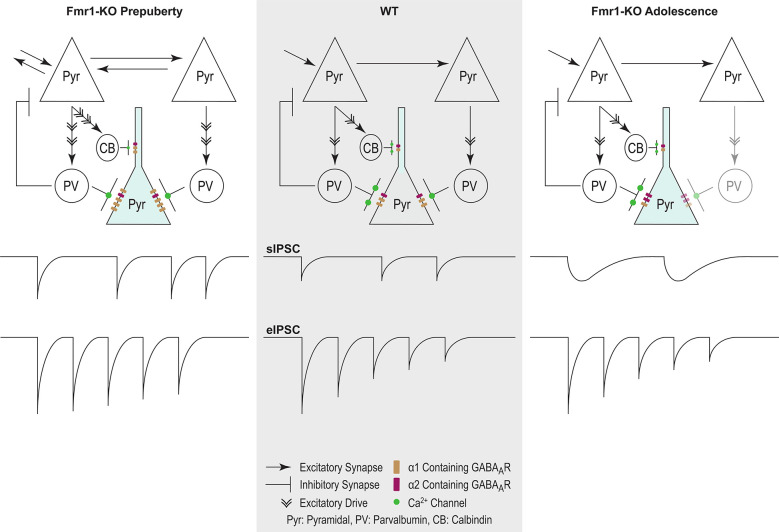Figure 8.
Proposed model of inhibitory changes in Fmr1-KO mPFC. Generic WT mPFC neuronal network. The model does not incorporate neurotypical developmental changes in inhibitory signaling. As such comparisons are between Fmr1-KO Pre-puberty and WT, and separately between Fmr1-KO Adolescence and WT. Fmr1-KO Prepubescence: compared to WT, the rate of sIPSC is increased in prepubescent Fmr1-KO mPFC. Enhanced excitatory drive due to hyper-connectivity between mPFC pyramidal cells is proposed to underlie the activity-dependent increase in sIPSC frequency. A putative increase in the number of post-synaptic GABAARs, as deduced from noise analysis, could promote the observed activity independent potentiation of sIPSC amplitudes. Finally, reduced probability of presynaptic release, possibly driven by attenuated expression of Ca2+ channels, can underlie the reduction in Fmr1-KO eIPSC depression. Fmr1-KO Adolescence: an activity independent slowdown of sIPSC kinetics was observed in adolescent Fmr1-KO mPSC compared to WT age-matched controls. Enhanced expression of α2 GABAA subunit, if functionally incorporated, could partially explain receptor kinetic slowdown. The slowdown of receptor kinetics could further promote a reduction in frequency, given the increasing time required for receptor re-sensitization.

